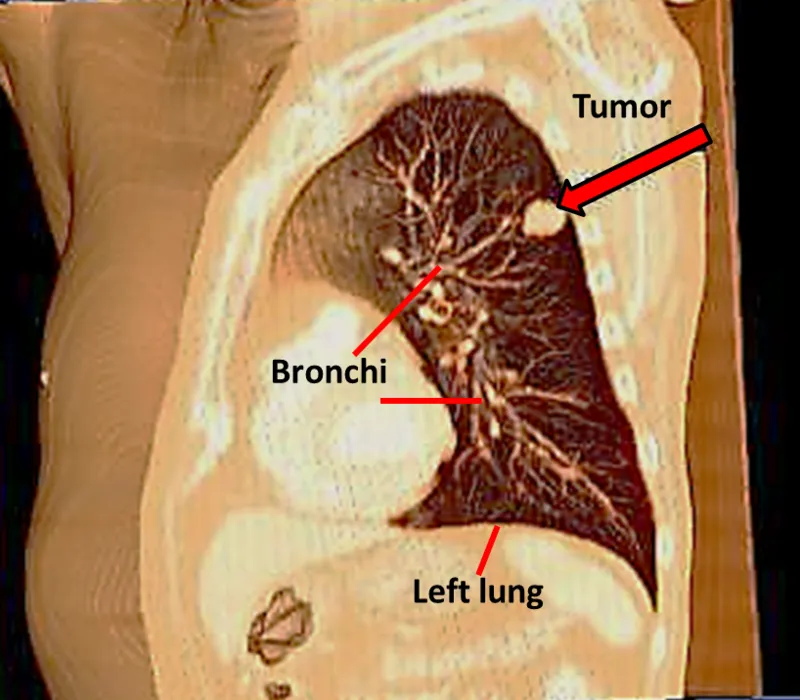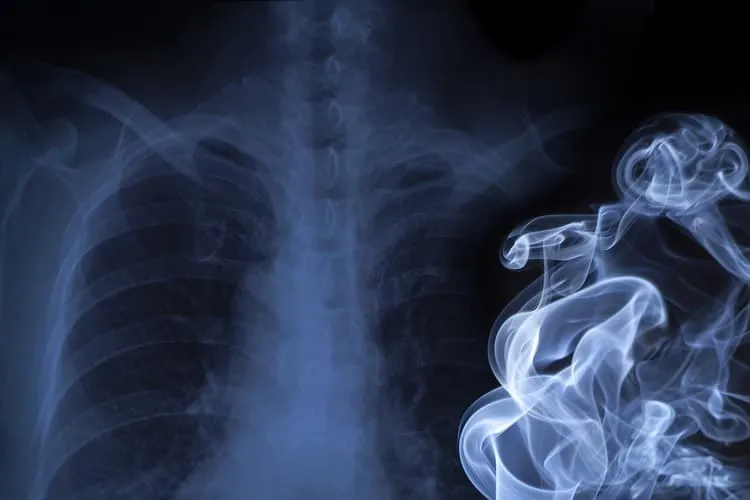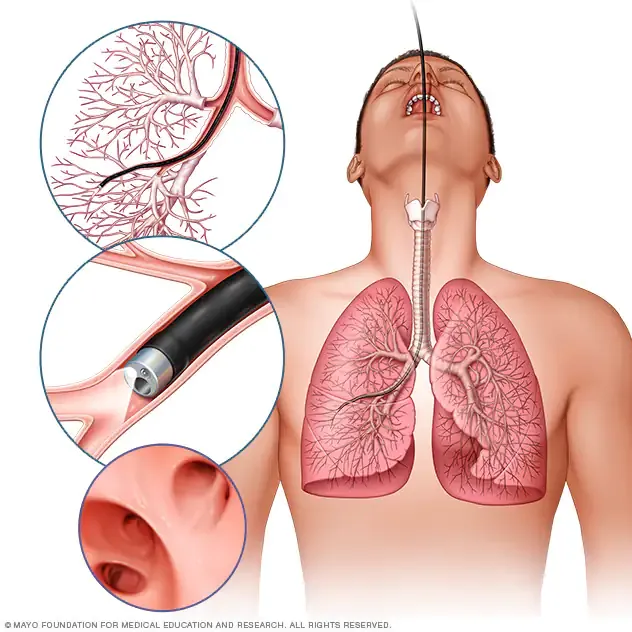
Image Source
Quality of life is a crucial measurement when it comes to cancer. Unfortunately, lung cancer has a poor prognosis as it’s generally discovered at an advanced stage and treatments are less effective. The disease causes more deaths than any other form of cancer, accounting for almost 220,000 deaths annually in the United States alone. Thankfully, early detection is the best way to improve survival rates. If you have been exposed to increased levels of asbestos or exposed to secondhand smoke on a frequent basis you should be aware of its risks and take preventive measures. As with any disease, understanding the facts about lung cancer can help you manage your concerns and make informed decisions regarding your health. In this article we discuss what causes lung cancer, how it’s detected and treated, common symptoms, and risk factors that can be mitigated.
What Is Lung Cancer?

Source
Cancer arises when mutations in the DNA of cells disrupt their function, causing abnormal cell growth. These cells proliferate uncontrollably and can metastasize, migrating to other tissues and organs and forming additional tumors. Lung cancer is the uncontrolled growth of abnormal cells in the tissues of the lungs. Lung cancer that has spread to other parts of the body is called metastatic cancer. Lung cancer accounts for about 22% of all cancers in men and 19% in women. The most common type of lung cancer is non-small cell lung cancer (NSCLC), which accounts for about 80% of cases. The second most common type is small cell lung cancer (SCLC), which accounts for about 20% of cases.
The Cause of Lung Cancer
Lung cancer is caused by prolonged exposure to harmful carcinogens like asbestos, tobacco smoke, and excessive ultraviolet light. Among them, tobacco smoke is the main risk factor for lung cancer, accounting for approximately 80% of cases. Smoking cigarettes, cigars, or pipes is the most common cause of lung cancer, with secondhand smoke also posing a risk. Other risk factors include exposure to asbestos, working in an occupation that uses excessive amounts of dust or fumes, excessive UV light exposure, and a family history of lung cancer.

How Is Lung Cancer Diagnosed?
Diagnosing lung cancer is a complex process. The best method of diagnosis is through an invasive biopsy procedure, in which a small sample of lung tissue is removed and examined under a microscope. However, this procedure is not suitable for all patients, so doctors usually first use non-invasive tests to assess your symptoms and rule out other possible diseases. These tests include a physical exam, CT scan, PET scan, X-ray, blood tests, and urine tests. It’s important to remember that the presence of these symptoms does not definitively indicate lung cancer.
Treatments for Lung Cancer

Image Source
Treatment for lung cancer is primarily dependent on the type of cancer cells and the extent of their spread. In most cases, surgery is used to remove the tumor, followed by radiation and/or chemotherapy to prevent the recurrence of cancer. The type of treatment used depends on several factors, including the type and stage of the cancer, the patient’s overall health and medical history, and the preferences of the patient and doctor. Post-treatment care is important to monitor the effectiveness of treatment and prevent the recurrence of cancer. Treatment plans are continually being improved and refined as research progresses, so patients should discuss all available options with their doctor.
Conclusion:
Lung cancer is a serious and complex condition that requires timely diagnosis and treatment. To help reduce your risk of developing the disease, avoid harmful behaviors like smoking cigarettes and excessive UV light exposure. If you notice any unusual symptoms, schedule an appointment with your doctor as soon as possible. Early detection can improve your chances of successful treatment and a better prognosis.
https://www.cdc.gov/cancer/lung/basic_info/what-is-lung-cancer.htm
https://www.cdc.gov/cancer/lung/basic_info/index.htm#:~:text=Cigarette%20smoking%20is%20the%20number,family%20history%20of%20lung%20cancer.
https://www.mayoclinic.org/diseases-conditions/lung-cancer/diagnosis-treatment/drc-20374627#dialogId51385865
https://www.nhs.uk/conditions/lung-cancer/diagnosis/
https://www.cdc.gov/cancer/lung/basic_info/diagnosis_treatment.htm

Image Source
Quality of life is a crucial measurement when it comes to cancer. Unfortunately, lung cancer has a poor prognosis as it’s generally discovered at an advanced stage and treatments are less effective. The disease causes more deaths than any other form of cancer, accounting for almost 220,000 deaths annually in the United States alone. Thankfully, early detection is the best way to improve survival rates. If you have been exposed to increased levels of asbestos or exposed to secondhand smoke on a frequent basis you should be aware of its risks and take preventive measures. As with any disease, understanding the facts about lung cancer can help you manage your concerns and make informed decisions regarding your health. In this article we discuss what causes lung cancer, how it’s detected and treated, common symptoms, and risk factors that can be mitigated.
What Is Lung Cancer?

Source
Cancer arises when mutations in the DNA of cells disrupt their function, causing abnormal cell growth. These cells proliferate uncontrollably and can metastasize, migrating to other tissues and organs and forming additional tumors. Lung cancer is the uncontrolled growth of abnormal cells in the tissues of the lungs. Lung cancer that has spread to other parts of the body is called metastatic cancer. Lung cancer accounts for about 22% of all cancers in men and 19% in women. The most common type of lung cancer is non-small cell lung cancer (NSCLC), which accounts for about 80% of cases. The second most common type is small cell lung cancer (SCLC), which accounts for about 20% of cases.
The Cause of Lung Cancer
Lung cancer is caused by prolonged exposure to harmful carcinogens like asbestos, tobacco smoke, and excessive ultraviolet light. Among them, tobacco smoke is the main risk factor for lung cancer, accounting for approximately 80% of cases. Smoking cigarettes, cigars, or pipes is the most common cause of lung cancer, with secondhand smoke also posing a risk. Other risk factors include exposure to asbestos, working in an occupation that uses excessive amounts of dust or fumes, excessive UV light exposure, and a family history of lung cancer.

How Is Lung Cancer Diagnosed?
Diagnosing lung cancer is a complex process. The best method of diagnosis is through an invasive biopsy procedure, in which a small sample of lung tissue is removed and examined under a microscope. However, this procedure is not suitable for all patients, so doctors usually first use non-invasive tests to assess your symptoms and rule out other possible diseases. These tests include a physical exam, CT scan, PET scan, X-ray, blood tests, and urine tests. It’s important to remember that the presence of these symptoms does not definitively indicate lung cancer.
Treatments for Lung Cancer

Image Source
Treatment for lung cancer is primarily dependent on the type of cancer cells and the extent of their spread. In most cases, surgery is used to remove the tumor, followed by radiation and/or chemotherapy to prevent the recurrence of cancer. The type of treatment used depends on several factors, including the type and stage of the cancer, the patient’s overall health and medical history, and the preferences of the patient and doctor. Post-treatment care is important to monitor the effectiveness of treatment and prevent the recurrence of cancer. Treatment plans are continually being improved and refined as research progresses, so patients should discuss all available options with their doctor.
Conclusion:
Lung cancer is a serious and complex condition that requires timely diagnosis and treatment. To help reduce your risk of developing the disease, avoid harmful behaviors like smoking cigarettes and excessive UV light exposure. If you notice any unusual symptoms, schedule an appointment with your doctor as soon as possible. Early detection can improve your chances of successful treatment and a better prognosis.
https://www.cdc.gov/cancer/lung/basic_info/what-is-lung-cancer.htm
https://www.cdc.gov/cancer/lung/basic_info/index.htm#:~:text=Cigarette%20smoking%20is%20the%20number,family%20history%20of%20lung%20cancer.
https://www.mayoclinic.org/diseases-conditions/lung-cancer/diagnosis-treatment/drc-20374627#dialogId51385865
https://www.nhs.uk/conditions/lung-cancer/diagnosis/
https://www.cdc.gov/cancer/lung/basic_info/diagnosis_treatment.htm
https://simple.m.wikipedia.org/wiki/Lung_cancer

It's my pleasure to introduce myself. I'm SHEIKH from Bangladesh.Recently I have passed my semester final Deploma in Textile and Now I want to BSC a private university.I wish that I study together with the job.Textile and Garments job is so hard that is not possible to continue study and job so i want to do something on online. That why i am come here.I have a 6 members in my family. I have a. Two brothers and one sister and also parents.My father is a business man. My mother is a housewife and brother are doing job and sisters studying.
My favorite game football but till a long time I can't play it because I don't get time to play and also my health condition is not good.
My favorite Food Biryani and Meat and Khichuri.I like Jhal very much.My favorite Colors are Black and White.
My favorite activity is Photography, Crypto, English learning, Content Writing.......